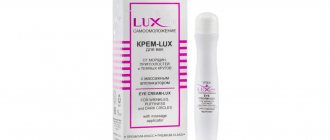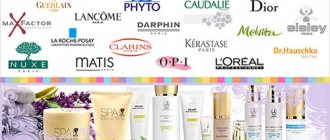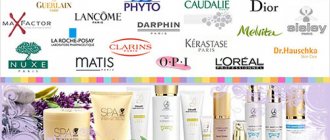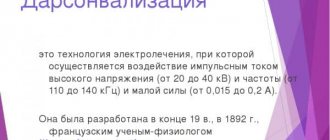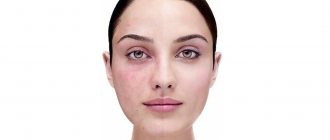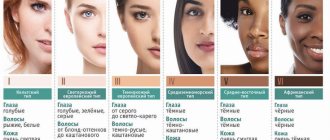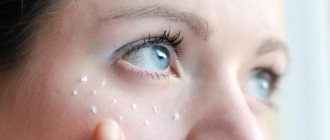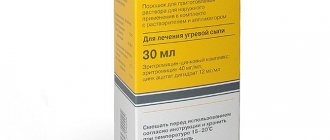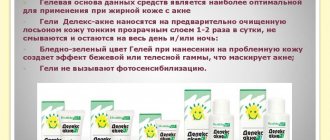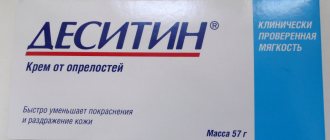Acne is a defect of the epithelium, leading to an inflammatory process, accumulation of sebum and pathogenic microorganisms in deep pores. This leads to the concept of acne, pimples, blackheads. There are many factors that trigger acne. If you find out exactly what mechanisms of damage led to it, you can carry out high-quality treatment that eliminates the risk of relapse.
The best creams and gels for acne.
October 22, 2022
14509
4.9
9
Content
- Why do acne appear on the face?
- How to choose an acne cream
- 10 best creams and gels for acne
- Zenerite
- Delex-Acne
- Baziron
- Klenzit-S from Glenmark
- Differin
- Juniper from Mi&Ko
- Clearasil Ultra
- Lumene Nordic Girl! Clear It Up!
- Skinoren
- Effaclar Duo + by La Roshe-Posay
Thanks to modern acne treatments, you can quickly and permanently solve the problem. We have created a selection of the best creams and gels for those with problem skin.
Both women and men experience pimples and acne, and at any age.
Why do acne appear on the face?
Among the causes of acne are such non-obvious, but very possible, as lack of vitamin D, stress, poor environment, use of sunscreen, and long conversations on the phone.
Now let's look at the common causes of acne on the face.
- Hormonal imbalance.
Typically, acne appears in women during PMS, in teenage girls and in pregnant women. This is due to the fact that the level of steroid hormones in the blood increases - the sebaceous glands begin to work more intensely. Due to hypersecretion of sebum, the protective abilities of the skin are reduced. The skin secretion thickens, the ducts become clogged with plugs that block the sebaceous glands. - Follicular hyperkeratosis.
In this case, the cells with hair follicles are poorly renewed. The stratum corneum of the hair follicles becomes thicker, which prevents the outflow of secretions from the sebaceous glands. - Excessive proliferation of propionic bacteria.
There are millions of different microorganisms on the human skin and mucous membranes. But sometimes they begin to multiply uncontrollably, and inflammation is possible. Pimples appear because such bacteria feed on the sebaceous plugs of the hair follicles. - Lack of zinc in the body.
When there is a lack of zinc in the human body, the skin produces an excessive amount of sebum - hence pimples and acne. - Improper skin care.
If you use skincare products that are not suitable for your skin type or use low-quality decorative cosmetics, it is quite possible that you will develop acne. - Poor nutrition and gastrointestinal problems.
The appearance of the skin often depends on the health of the internal organs.
Therefore, with diseases of the intestines and stomach, acne may appear. A balanced diet (less sugar, fast food, baked goods) is also important. Read also Vitamins for hair loss: 10 of the best Review of the best vitamins for hair.
Key Factors in Acne Formation –
You probably already realized that overproduction of sebaceous gland secretions is one of the main reasons why acne appears on the face. But this factor is far from the only one. This also includes the process of follicular hyperkeratosis, and in addition, the bacteria Propionibacterium acne (P.acne), which live both on the surface of the skin and subsequently in the ducts of the sebaceous glands, are also important.
- Hyperproduction of sebaceous gland secretions – it is caused by increased production of androgens, as well as increased sensitivity of sebaceous gland receptors to androgens. We have already described this process above, but as it turned out, what is important here is not only that there is an increase in the secretion production of the sebaceous glands. A very important point is the change in the chemical composition of the secretion of the sebaceous glands (sebum). In particular, against the background of increased secretion, there is a decrease in the content of linoleic acid in the sebum.
The function of the latter is to regulate the processes of differentiation and desquamation of follicular and epidermal keratinocytes. The stratum corneum of the epidermis of the skin consists of epidermal keratinocytes, and follicular keratinocytes line the lumen of the hair follicle. A decrease in the content of linoleic acid in sebum causes follicular hyperkeratosis, which is one of the most important factors in the development of acne and pimples (we will talk about follicular hyperkeratosis below).Simultaneously with the decrease in the concentration of linoleic acid, the content of unsaturated fatty acids in the sebum increases (from 5 to 20%). Such acids are comedogenic and also contribute to the development of follicular hyperkeratosis and the onset of inflammation. And lastly, an increase in sebum secretion also leads to the fact that follicular keratinocytes begin to release an inflammatory mediator called IL-1α (interleukin-1α). This mediator also promotes follicular hyperkeratosis and the development of inflammation.
- Follicular hyperkeratosis - the lumen of the hair follicle is covered with layers of follicular keratinocytes of varying degrees of differentiation.
When their cell layers are renewed, a constant process of exfoliation of their surface layer occurs. A low concentration of linoleic acid in sebum leads to: 1) hyperproliferation of follicular keratinocytes, i.e. to a sharp increase in the number of their layers and their thickness, 2) to a disruption in the desquamation of keratinocytes into the lumen of the hair follicle. Follicular hyperkeratosis, together with an increase in sebum production, leads to the formation of fatty plugs (comedones) in the lumen of the follicles, obstruction of the follicles and the onset of the inflammatory process. Moreover, at the first stage, inflammation is not associated with a sharp increase in the number of P. acne bacteria in the lumen of the follicle and its damage, but is associated with the production of interleukin-1α by follicular keratinocytes, as well as with an increase in the concentration of free fatty acids. - The presence and activity of the bacteria "P. acnes" - the bacterium Propionibacterium acnes (and to a lesser extent Staphylococcus epidermidis) - are the main microorganisms that are involved in the formation of acne.
These bacteria are representatives of the normal opportunistic skin flora, which is also present on the skin of people without acne symptoms. For a long time, the importance of these bacteria was underestimated; for example, it was believed that they were only responsible for the development of local inflammation in the hair follicle. However, this bacterium also affects the formation of comedones (blackheads) themselves. In particular, the increase in the content of free unsaturated fatty acids in sebum occurs precisely thanks to the enzymes (lipases) of these bacteria. These enzymes break down di- and tri-glycerides contained in the secretions of the sebaceous glands into free fatty acids. And as we said above, free fatty acids are comedogenic and contribute to follicular hyperkeratosis and the development of inflammation. In addition, the listed bacteria secrete enzymes, which subsequently lead to rupture of the walls of the hair follicle - as a result of which the entire contents of the follicle are poured into the surrounding tissue, which leads to a pronounced local inflammatory reaction.
What factors can aggravate the appearance of acne -
- use of comedogenic cosmetics,
- insufficient cleansing of the skin from water- and fat-soluble contaminants,
- medications (prednisolone, steroid hormones, drugs with lithium, anticonvulsants, iodides and bromides),
- active sweating.
How to choose an acne cream
When treating acne and pimples, an integrated approach is required, so just cream or gel is not enough. To choose the “right” remedy, you need to determine the cause of the rash. By the way, it often happens that one specific cream does not solve the problem, so you need to try several products. For acne, pharmaceutical creams or gels are usually prescribed, which contain anti-inflammatory components:
- acids (azelaic, salicylic, kojic). They relieve inflammation, cleanse pores, and make skin tone more even.
- essential oils with anti-inflammatory and calming effects (green tea, tea tree, aloe vera, eucalyptus, calendula).
- absorbent minerals that absorb secretions from the sebaceous glands, as well as natural antibiotics (zinc, camphor, sulfur).
- hyaluronic acid (for deep skin hydration).
- retinoids, demethyl sulfoxide - for healing damage, regulating the functioning of the sebaceous glands.
- cosmetic oils that help regenerate the skin (grape seed, olive, peach).
As for acne creams with antibiotics and hormones, they act faster, but they should be prescribed exclusively by a dermatologist. Treating the skin with such drugs is only allowed for a short period of time. If you use hormonal or antibacterial agents uncontrollably, unwanted side effects such as withdrawal syndrome or skin atrophy may develop.
Causes of acne
Photos from open sources
DRUGS USED FOR TREATING ACNE (Part 1)
Preferanskaya Nina Germanovna Associate Professor, Department of Pharmacology, Faculty of Pharmacy, First Moscow State Medical University named after. THEM. Sechenova, Ph.D.
This disease can occur at almost any age, from early childhood to old age, but most often occurs during rapid puberty in adolescents and in girls in the last week of the menstrual cycle. In almost 90% of cases, juvenile acne occurs, observed in patients 12–18 years old. However, over the past decades, cases of acne have become more frequent (up to 11%), which occur at older ages.
One of the most common causes of acne during adolescence is hormonal changes in the body. The active release of steroid hormones, especially androgens (male sex hormones), in both girls and boys, causes increased secretion of the sebaceous glands. Sebum changes its properties, turning from liquid into a dense and viscous secretion. There is hypersecretion of sebum, blockage of pores, papulopustular acne, nodular and cystic formations occur. The dense secretion of the sebaceous glands forms plugs in the ducts, clogs them and forms microcomedones. In the future, comedones are formed; they can be open (blackheads - blackheads) or closed (whiteheads - whiteheads). Comedones are localized on the skin of the face, chest, back, and later on the back of the neck. Open comedones look like black dots that clog the mouths of the hair follicles; when they are squeezed out, a white or brownish plug is released, consisting of thick sebum and horny scales. The black color of comedones is caused by melanin and not by pollution or oxidized sebum.
Closed comedones are small, slightly raised hemispherical papules of white color, and have a very small follicular opening. Closed comedones are the main potential source of inflammatory acne, when, along with sebaceous plugs, the superficial stratum corneum of the hair follicles thickens, and the compacted horny scales create an additional obstacle to the outflow of sebaceous gland secretions. Thickening of the superficial stratum corneum of the skin (hyperkeratosis) can develop under the influence of changes in hormonal levels, vitamin A deficiency, exposure to harmful chemicals or mechanical factors (friction, pressure) on the skin. All this creates a favorable environment for the development of the microbial process. The population of propionic bacteria, anaerobic pleomorphic diphtheroids (Propionibacterium acnes, Propionibacterium granulosum and Propionibacterium avidum) is growing, the staphylococcal flora (Staphylococcus epidermidis) and the yeast-like lipophilic fungus (Malassezia furfur) are activated.
If acne persists into adulthood, then this is a serious signal to think about your health. The appearance of acne can directly depend on the nature of nutrition and the state of the gastrointestinal tract. Very often, exacerbation of acne is associated with exogenous causes, such as masking acne with cosmetics, improper hygiene, a humid hot climate, the bad habit of touching areas of rashes unnecessarily, or even worse, squeezing out pimples.
There are mild, moderate and severe degrees of acne. For mild forms of acne, products for external use are mainly used. Treatment of moderate and severe forms should be comprehensive - local and systemic means.
PRODUCTS FOR EXTERNAL USE
First-line drugs in the treatment of acne - Benzoyl peroxide , Azelaic acid and Tretinoin - are effective with long-term use (3 months or more). Sometimes their use causes skin irritation, which is usually eliminated by reducing the frequency of application to the skin or reducing the concentration. The simultaneous use of 2 or more products is unacceptable; temperature changes and active insolation are harmful (Latin insolatio/insolare - “expose to the sun”).
√ Benzoyl peroxide has been used in dermatology for more than 20 years, has a pronounced antibacterial effect, promotes the dissolution of keratinized tissue, which allows it to be used for the treatment of mild to moderate acne. Treatment begins with a low concentration of the drug for 2–3 weeks, the concentration is gradually increased and used until the skin manifestations completely disappear. If local irritation is observed during treatment, the intervals between applications should be increased. The combination of benzoyl peroxide with antibiotics, azole compounds and sulfur preparations in combination preparations significantly increases their effectiveness. The drug is available in the form of a gel for external use under TN: “ Baziron AS ” (2.5 and 5% tube 40 g), “ Eclaran” (5 and 10% tube 45 g).
√ Azelaic acid has a pronounced antibacterial and anti-inflammatory effect. Prevents the formation of comedones and promotes their removal, while exhibiting an anti-comedogenic effect. Has a depigmenting and anti-acne effect. When using preparations containing azelaic acid, the production of fatty acids is reduced, oiliness is reduced and skin pores are cleansed. The drug under the TN " Skinoren" is available in the form of a 20% cream (tube, 30 g) and 15% gel (tube, 5, 15, 30 and 50 g).
Other preparations containing azelaic acid are “ Azelik” gel 15% (tube 30 g), “ Azik-Derm” cream 20% (tube 30 g).
√ Tretinoin is a synthetic retinoid, an analogue of vitamin A, produced under the technical names “ Isotretinoin” and “ Retin-A” (Retin ointment, 0.05 and 0.1% 10 g), “ Airol Roche” cream 0.05%, used for treatment of acne externally in case of ineffectiveness or individual intolerance to benzoyl peroxide. Eliminates existing comedones and prevents the appearance of new ones by normalizing the processes of keratinization of the epithelium and reducing the secretion of sebum.
√ Isotretionin + Erythromycin (TN " Isotrexin" , 10 g tube) - a combined retinoid gel with a macrolide antibiotic - has an antiseborrheic, anti-inflammatory and keratolytic effect, stimulates the growth of epithelial cells and affects their differentiation. Inhibits the terminal differentiation of sebocytes and hyperproliferation of the epithelium of the excretory ducts of the sebaceous glands, normalizes the composition and facilitates the removal of secretions, reduces the production of sebum and reduces the inflammatory reaction around the sebaceous glands. It affects comedonogenesis, inhibits follicular keratinization, and prevents the occurrence of acne caused by Propionibacterium acne. Erythromycin has a bacteriostatic effect against Propionibacterium acne. When used, side effects may occur in the form of burning, irritation, peeling of the skin, hyperemia, photosensitivity (increased sensitivity when in contact with sunlight).
√ “ Curiozin” (gel 10 and 5 g) contains zinc hyaluronate 15.4 mg, is used to treat acne of varying severity, promotes tissue restoration, improves cellular nutrition processes, and has antimicrobial activity. Hyaluronic acid is directly involved in the process of maintaining skin elasticity and turgor, has a stimulating effect on cell proliferation and restoration, has a beneficial effect on local microcirculation, and takes part in the process of natural wound healing. Zinc provides an antiseptic effect and accelerates wound healing. It is eliminated quite quickly after use, so the burning sensation and feeling of skin tightness that occurs at the beginning of treatment usually go away on their own.
ANTIBIOTICS FOR EXTERNAL USE
Treatment of acne with topical antibiotics is much safer than systemic antibiotics. Antibiotic therapeutic efficacy when used topically is significantly inferior to drugs containing benzoyl peroxide or azelaic acid, so the use of external antibiotics is justified only in case of intolerance to first-line drugs. The external use of antibiotics for acne is used to treat complicated forms of the disease. The disadvantages of antibiotic treatment include the development of an addictive effect and resistance of propionic bacteria.
√ Erythromycin ointment 1% (10, 15 g). The high antibacterial and anti-inflammatory activity of erythromycin is even more pronounced in its combination with zinc, produced under the trademark “ Zinerit” . Zinc, in turn, reduces the secretion of the sebaceous glands and loosens the pores, facilitating the local action of erythromycin.
√ Clindamycin (Dalacin) is a bacteriostatic antibiotic from the lincosamide group, which has a wide spectrum of action, is not addictive to skin microflora and is highly active against propionic bacteria and staphylococci. TN " Klindovit" gel 1% (30 g tube) - the drug is active against all strains of Propionibacterium acnes; after application to the skin, the amount of free fatty acids on its surface decreases from approximately 14 to 2%. The drug quickly accumulates in comedones, exhibiting antibacterial activity. The gel is applied in a thin layer to the previously cleaned and dried affected area of the skin 2-3 times a day. To obtain a therapeutic effect, treatment should be continued for 6–8 weeks, and if necessary, can be continued for up to 6 months. An alcohol solution for external use containing 1% clindamycin per 100 ml is produced under the trademark " Zerkalin" . Excipients are ethanol, purified water and propylene glycol. The solution is applied to the affected area of previously cleansed and dried skin 2 times a day, morning and evening. Klenzit S is a combined gel containing Clindamycin + Adapalene. Adapalene, a retinoid metabolite with an anti-inflammatory effect, normalizes the processes of keratinization and epidermal differentiation. Reduces the binding of follicular epithelial cells involved in the formation of microcomedones. Suppresses chemotaxis and chemokinetic reactions of human polynuclear cells. The gel is applied externally once a day (before bedtime) to previously cleansed and dried affected areas of the skin. The course of treatment is 2–4 weeks. If necessary, repeat the course of treatment. At the beginning of treatment, acne may worsen. If skin irritation occurs, the drug should be temporarily stopped or discontinued. It is necessary to avoid exposure to the sun and the use of artificial UV radiation (solarium).
√ Tetracycline (3% ointment). Tetracycline is a broad-spectrum antibiotic. It is used externally in the treatment of purulent skin infections (acne), prescribed for children over 11 years of age and adults. The drug is applied directly to the affected area of the skin in a thin layer 1-2 times a day. With prolonged use of the drug, redness, discoloration of the skin, itching, slight burning at the site of application of the ointment, and photosensitivity may occur.
√ Levomycetin-Acri is available as an animent and solution for external use, used for bacterial skin infections caused by sensitive microorganisms. It has a bacteriostatic effect with a wide spectrum of action, disrupts the process of protein synthesis in the microbial cell. It is applied topically in the form of alcohol solutions and 5–10% liniment; the drug is applied to the affected surface several times a day.
√ Fusidic acid (fusidic acid) is used for skin and soft tissue infections caused by susceptible microorganisms. A cream is produced for external use under the Fusiderm . For external use, fusidic acid is applied in a thin layer to the affected areas of the skin 2-3 times a day for 7 days. In the area of the affected areas, the drug penetrates deeply into the skin. When treating acne vulgaris, long courses of therapy are required.
√ Antiseptics are often used for acne on the chest and back. A mixture of salicylic alcohol 40 ml with the addition of 3 tablets of chloramphenicol (chloramphenicol) is moistened with a cotton swab and the rash areas are wiped morning and evening for 2-3 weeks. A mixture of salicylic alcohol + boric alcohol + chloramphenicol is also used. Based on salicylic acid, a whole series of very effective anti-acne lotions that do not contain ethanol are produced for problem skin. Lotions can quickly relieve inflammation, heal and eliminate acne of any complexity from the skin, and also stimulate the rapid healing of damaged skin areas. Benzoic acid has an antimicrobial effect, which inhibits the activity of enzymes in microbial cells and prevents the growth of bacteria. In medicine, it is used for skin diseases as an external antiseptic.
√ Dr. Theiss's acne cream - a combined drug - has a dermatoprotective, bactericidal, antibacterial effect; when used, the drug cleanses the skin and eliminates acne. The main active ingredient is triclosan, a chlorine-containing phenol derivative, which has an antiseptic effect. Triclosan is active against gram-positive and most gram-negative bacteria. Ethyl alcohol, sulfur in biosulfur, sodium tetraborate have an antiseptic and disinfectant effect, sulfur has antiparasitic and dermatoprotective properties. Glycerin gives the skin elasticity and protects it from drying out. The drug frees the excretory ducts of the sebaceous glands from horny masses, sebum, dust and causes a nonspecific anti-inflammatory effect.
Zenerite
One of the most popular remedies for acne and acne, which contains an antibiotic (erythromycin) and zinc salts. Erythromycin prevents the growth of bacteria, and zinc salts work as an antiseptic. If you have been prescribed "Zinerit" for acne, remember that it is not advisable to use it often and for a long time, because addiction develops and the drug simply stops working.
Zenerite
Astellas Pharma Europe, Russia
Zenerite powder for solution preparation (external use), 30 milliliter bottle - a medicinal product for the treatment of acne.
Resistant to cosmetic products. from 533
5.0 1 review
2007
- Like
- Write a review
Zeneritis for acne
The drug has a composition that causes an antibacterial effect. Therefore, it eliminates pathogenic microflora from the skin, preventing the formation of ulcers. This helps treat small and large acne and prevent its recurrence. The main component is Erythromycin, a broad-spectrum antibiotic that prevents the production of protein in bacterial cells, which gradually leads to their death. It is active against many bacteria.
The composition contains additional components that increase the spectrum of action. For example, zinc. It eliminates inflammatory processes, cleanses the skin from accumulation of dirt and fat, and has an antiseptic effect.
The drug must be applied to the epidermis for the effect to occur. It is usually observed within 2 weeks after initial use. The maximum course of treatment is 3 months, after which the face becomes completely cleansed.
The product must not be used over an excessively long course of treatment, otherwise the bacteria will develop an addiction to the active substance.
They will become resistant, the effect will not occur. Therefore, it is recommended to apply the product no more than once a day and take breaks between courses of treatment.
Delex-Acne
This gel works well if you have mild to moderate skin breakouts. "Delex-Acne" is also prescribed for demodex (skin mites). An excellent product for home daily facial skin care, it is also used for the active treatment of acne as part of complex therapy. Delex-Acne contains sulfur, calendula and nettle. The acne gel does not contain hormones, antibiotics or alcohol, and therefore has no age restrictions for use. If you choose this gel, then it is optimal to combine it with lotion from the same series. You should use Delex-Acne gel no more than several times a week so as not to dry out the skin. The disadvantages of the product are that the smell is not very pleasant and that you can’t buy Delex-Acne in every pharmacy.
Delex-Acne
, Russia
The gel is characterized by anti-inflammatory, absorbable, antibacterial and sebostatic (drying) effects.
The drug in gel form is considered optimal for use in case of oily seborrheic skin, since the use of creams and ointments can increase the proliferation of harmful microorganisms. from 150
5.0 2 reviews
320
- Like
- Write a review
Antibiotics for acne treatment –
Antibacterial drugs for the treatment of acne can be used both for external use (usually in the form of gels) and in the form of tablets for oral administration. Modern research shows that antibacterial therapy in patients with acne is not very effective, because Over time, it causes the formation of resistant strains of bacteria and, as a result, leads to more severe acne. But in some cases, antibiotic therapy for acne is still necessary, and in addition, there are ways to reduce the risk of bacterial resistance to antibiotics.
a) Mild to moderate papulopustular acne:
Antibiotics, if prescribed, are only externally. These may be drugs such as Dalacin, Clindovit or Clindatop. These drugs are monocomponent gels containing the antibiotic clindamycin. In addition, there are drugs in the form of solutions for topical use, for example, the drug Zerkalin. This drug is clindamycin based, but it also contains alcohol, which is actually not very good for acne patients (especially if you are also using retinoids and benzoyl peroxide).
Another drug - Zinerit (in the form of a solution that is applied using an applicator) - is based on erythromycin, but there are now many resistant strains of the bacterium P.acnes to this antibiotic. There are also combination preparations that, in addition to the antibiotic, may additionally contain either the retinoid adapalene or benzoyl peroxide. An example of several combination preparations in the form of gels:
- Klenzit-S – contains clindamycin 1% + adapalene 0.1%,
- Indoxyl – contains clindamycin 1% + benzoyl peroxide 5%.
Photos of some drugs –
Important: for papulopustular acne of mild or moderate severity, antibacterial gels are prescribed primarily only in cases where the predominant inflammatory elements in the patient are pustules with pus. In this case, in addition to the external antibiotic, we must simultaneously use + external retinoids, + benzoyl peroxide.
And here you may ask: why is it recommended to also use benzoyl peroxide when prescribing an antibiotic gel? Isn't one antibiotic enough? The fact is that the use of benzoyl peroxide together with an antibiotic greatly reduces the risk of P.acnes bacteria developing resistance to antibiotics. Including the development of such resistance contributes to the transformation of mild forms of acne into forms with a more severe course.
As for patients whose inflammatory elements are represented predominantly by papules (i.e., without pus), it is irrational to prescribe antibiotics in this case. It is optimal to use only a combination of external preparations “benzoyl peroxide + retinoid”.
b) Papulopustular form of severe acne:
For severe papulopustular acne, antibiotics are prescribed only orally (i.e. in tablets for oral administration), plus we prescribe externally retinoids + benzoyl peroxide. For systemic antibiotic therapy, drugs from the tetracycline group will be primarily used - this can be either tetracycline itself or its derivatives - doxycycline and minocycline. Only a doctor can determine the optimal dosage for each individual patient.
As for tetracycline, the average daily dosage is usually 1000 mg, but in serious cases the dose can be increased to 3500 mg per day (such doses can only be used under monitoring of liver function). Tetracycline can be taken only 1 hour before meals or 2 hours after; the duration of administration is determined by the doctor, but not more than 8 weeks. However, this drug has serious age restrictions, and in recent years more resistant strains of P. acnes have been discovered.
Much fewer resistant P. acnes strains have been found to lipophilic tetracyclines (such as doxycycline and minocycline). Doxycycline is taken at a dose of 100 to 200 mg per day orally for no more than 8 weeks, regardless of meals. However, it induces photosensitivity in the summer and therefore in summer it is better to use another antibiotic (azithromycin). Minocycline is also taken at a dose of 100-200 mg per day, but this drug can cause blue-black pigmentation in different areas of the skin. This pigmentation most often occurs in the area of atrophic scars and acne scars.
A good drug of doxycycline is
Antibiotics of the Macrolide group - previously a drug such as erythromycin was widely used, but now there are a lot of resistant strains of P.acnes to it. It is more preferable to prescribe azithromycin in a dose of 250 to 500 mg (taken only 3 times a week). Unfortunately, this drug may have side effects such as diarrhea, and therefore it is best to take it only with parallel medications to restore intestinal microflora. Azithromycin is a good alternative for patients who cannot use doxycycline.
Antibiotics of the Lincosamide group - clindamycin belongs to this group of antibiotics. But its use is justified only for external therapy (with the composition of products for external use), and when taken orally, there is too high a risk of getting a severe form of anibio-associated diarrhea, which is called pseudomembranous colitis. This is such a terrible thing (with a high mortality rate) that don’t even think about taking clindamycin tablets.
Drugs of the sulfone group - these include the drug Dapsone, but it can only be used if the patient develops resistance to other antibiotics (i.e. this drug will not be the first choice drug). Antibiotic resistance should be suspected if there is no response to treatment after 6 weeks of antibiotics. Moreover, in cases where we assume resistance, it is very important for us to exclude the development of gram-negative folliculitis in the patient (usually it occurs precisely after long-term use of antibiotics in the past).
Important: the most painful area of antibiotic therapy in the treatment of acne is the development of resistant strains of P.acnes and S.epidermidis. Concurrent use of topical benzoyl peroxide products with antibiotics, and avoidance of frequent changes between different antibiotics, are the best ways to prevent antibiotic resistance in P. acnes and S. epidermidis. Phototherapy procedures (IPL), photodynamic therapy, and the use of lasers can help reduce the need for antibiotics. We will tell you more about them at the end of the article.
Baziron
Acne gel "Baziron" exfoliates dead skin cells, which often “clog” pores, which is why pimples and blackheads form. The drug contains benzene peroxide and green tea, which dry out inflamed skin, normalize its cellular respiration and reduce secretions from the sebaceous glands. "Baziron" helps well with blackheads and subcutaneous pimples. The product perfectly moisturizes the skin.
Baziron AS
Galderma, Switzerland
Baziron AS is an allergy-resistant drug; the composition of this drug has been thoroughly tested for allergens, which ensured that the risk of an allergic reaction when using it is minimized.
The product has been dermatologically tested to identify any side effects that may irritate the skin, suitable for dry and sensitive skin. Does not contain alcohol. It also has anti-comedogenic properties, that is, it opens the fullicles and removes comedones (blackheads) on the nose. from 571
5.0 2 reviews
1415
- Like
- Write a review
Treatment with Skinoren
The medicine contains a broad-spectrum antibiotic, which produces an antibacterial effect. The drug has the following properties that distinguish it from other anti-acne products:
- The main form of release is cream, gel;
- penetration into the deep layers of the epidermis;
- the main active component is azelaic acid, which destroys and prevents the development of pathogenic microflora;
- suppression of the activity of the sebaceous glands;
- prevention and elimination of acne;
- removal of traces of connective tissue scars formed from the removal of acne;
- elimination of age spots.
1 month of use is enough for the first result to appear. A lasting effect is observed within 6 months after continuous therapy.
Recommendations for use:
- spot application to areas where pimples and blackheads appear;
- prohibition on contact with the mucous membrane of the eyes, which may cause irritation;
- prohibition on use during pregnancy, since the active component penetrates the placental barrier and causes a toxic effect.
Some patients may develop individual intolerance to the constituent components. It manifests itself in the form of an allergic reaction leading to inflammation, redness, and itching. To eliminate this effect, it is enough to stop taking the drug. If the allergy is severe, antihistamines are used.
Klenzit-S from Glenmark
This acne gel contains the antibiotic clindamycin, which fights acne by reducing inflammation. And adapalene (a derivative of vitamin A) moisturizes and regenerates the skin. If you find a pimple on your face in the evening and smear it with Glenmark Clenzit-S gel, the pimple will be gone in the morning. You can use the product for no longer than three months (once a day), because addiction may develop. Improvement in skin condition occurs after a week of using Klenzit-S. During treatment, peeling, burning and redness of the skin are possible. But after three weeks the skin gets used to it. It is better to wash your face with gentle, soft products at this time. During pregnancy and frequent exposure to the sun, you cannot be treated with Klenzit-S gel.
Klenzit-S
Glenmark Pharmaceuticals, India
A preparation for external use for the treatment of acne.
Before use, you should consult your doctor. from 486
5.0 1 review
969
- Like
- Write a review
Colon cleansing drugs
The quality of the digestive tract directly depends on the condition of the skin. If the intestinal microflora is disturbed, dysbiosis may occur, leading to frequent rashes on the face. Its formation causes a disruption in the normal microflora on the epidermis, which leads to the risk of the formation of ulcers.
If the main problem is the function of the gastrointestinal tract, acne is most often localized on the wings of the nose, chin, and neck. Additionally, other symptoms are detected in the form of impaired stool formation, abdominal pain, and increased gas formation. In this case, it is recommended to use not only probiotics, but also sorbents that eliminate toxins from the digestive tract.
Lactofiltrum
The drug contains components of normal intestinal microflora that inhabit it after consumption. Probiotics remove toxins, intoxication products, and normalize the body's own microflora. The concentration of pathogenic microorganisms gradually decreases, and the function of the digestive tract improves.
To achieve a high-quality effect, you need to take 3 tablets at a time. They need to be drunk 3 times a day. The optimal course of treatment is 4 weeks.
Bifiform
The drug contains a large number of lactobacilli, which improve the condition of the intestinal microflora. Main active substances:
- lactic acid bacteria;
- lactulose, dextrose;
- leaven.
Take 1 capsule 3 times a day for 1 month. Gradually the negative symptoms will pass.
Linex
A probiotic contains 2 main substances:
- lactulose;
- lebenin.
The components inhibit and destroy pathogenic microflora. The normal concentration of nutrients in the intestines is restored. The body is strengthened, toxic components are eliminated from the gastrointestinal tract. Drink 2 capsules 3 times a day for 3 weeks.
If you use sorbents for a long course, after a week the formation of feces will stabilize. The patient no longer feels pain or increased gas formation. But the skin will begin to recover only 1 month after treatment; this is a long process.
The effectiveness of sorbents in combination with probiotics will be discovered only if the cause of acne development is caused by disorders of the digestive tract.
Differin
The active ingredient in this gel for acne and pimples is adapalene (retinoid). Differin is indicated for people with combination and oily skin. Judging by patient reviews, this drug really works, although it is inexpensive. An important advantage of this gel is that it removes acne and scars on the skin. You can use Differin for a long time because it does not contain an antibiotic.
Differin
Laboratoires Expanscience, France
A drug for the treatment of acne, for external use.
from 624
5.0 2 reviews
1406
- Like
- Write a review
Squeezing pimples and blackheads (comedone extraction)
For comedonal and papulopustular forms of acne, invasive methods are sometimes used, for example, comedonal extraction. Extraction means their removal/squeezing out - using special comedones extractor tools, or by palpation. Moreover, we are talking about the removal of macrocomedones, i.e. large eels. But squeezing out pimples (papules and pustules) can, at best, lead to the appearance of a hyperpigmented spot in this area in the future.
In the worst case, self-squeezing pimples and blackheads can lead to the spread of inflammation and the formation of deep subcutaneous pimples, which will leave superficial or deep atrophic scars on the skin. Therefore, only comedones (acne) can be squeezed out, and secondly, this should only be done by a dermatologist or a dermato-cosmetologist. The procedure is called “mechanical facial cleansing.”
Mechanical facial cleansing: video
Important: keep in mind that the removal of comedones is much easier and without complications if the patient has previously used topical retinoids for at least 3-4 weeks. The fact is that topical retinoids (adapalene) also have comedonolytic properties.
Juniper from Mi&Ko
Acne cream perfectly fights acne and other imperfections of problem skin. “Juniper” can be applied not only to the face, but also to other areas of the body where there are rashes. Use the cream morning and evening. The drug relieves inflammation and destroys bacteria, nourishes the skin, moisturizes, and reduces sebum production. Juniper cream is suitable for both teenagers and those who have pimples and acne due to hormonal imbalances or with age. According to customer reviews, the cream smells nice, has a comfortable texture, is not tested on animals and is inexpensive.
Types of skin rashes
Photos from open sources
Juniper from Mi&Ko cream
MiKo, Russia
Face cream Juniper consists of 24% organic raw materials. The new formula contains lavender hydrolate and boswellia extract, which instantly improve complexion, eliminate dryness and inflammation, and protect the skin from stress. A unique extract of wintergreen leaves eliminates rashes and stimulates skin renewal. With Juniper cream, your skin will be healthy and smooth, which will be the key to self-confidence!
39
- Like
- Write a review
Hormone therapy
Acne often appears in adolescence due to hormonal imbalance. Doctors recommend using hormonal medications only in extreme cases when other medications do not help. For this purpose, hormonal contraceptives are prescribed to stabilize hormone levels.
Jess
One of the most popular pills for preventing unwanted pregnancy. Additionally, they stabilize hormonal levels, so increased sebum production and clogged pores are eliminated. Skin condition improves.
Diana-35
The composition contains estrogen, which is a female sex hormone. When its level stabilizes, inflammatory processes on the skin are eliminated. The process of menstruation is normalized and unwanted pregnancy is prevented.
The drug may cause increased thrombus formation and an increase in the concentration of clotting factor. Therefore, it is recommended to periodically do a coagulogram to prevent complications.
Yarina
The tablets quickly and efficiently stabilize hormonal levels and help get rid of small rashes and purulent acne. The function of the endocrine system is normalized, which helps stabilize the negative psycho-emotional state.
Clearasil Ultra
Clearasil cream is sold in almost any store or pharmacy. Contains salicylic acid, cocoglycosin, allantoin, aloe extract, glycerin, lavender extract, Italian immortelle extract, cistus Montpelient extract. The product relieves inflammation well, is applied precisely and quickly solves the problem of acne and acne. The instructions say that the Klerasil cream will remove a pimple in 4 hours! The drug has a slight mattifying effect. And although the tube of cream is small and not cheap, Klerasil is used very sparingly, so it will last for a long time.
Clearasil Ultra
Reckitt Benckiser, Netherlands
Active components relieve inflammation, redness and irritation, normalize the structure of the epidermis, and promote exfoliation of dead cells.
Thanks to AcceladermTM technology, the cream enhances the effect, allowing the active ingredients to penetrate deeply into all layers of the skin. from 205
5.0 1 review
226
- Like
- Write a review
Dangerous ingredients in cosmetics for problem skin
Cosmetics with natural ingredients are considered the best, but there are not many such products on store shelves. Products with synthetic ingredients can also be used in makeup and care for problem skin, if they do not contain the following harmful substances:
- Aluminum. This element is often found in foundation, less often it is added to mattifying creams. Scientists have proven that with frequent contact with the skin, it tends to accumulate in the body. With a high concentration of aluminum in tissues, cancerous tumors can develop.
- Silicone. It is found in both budget and expensive products. Silicone is capable of creating an impenetrable film on the skin. Because of this, oxygen starvation is formed, favorable conditions are created for the proliferation of bacteria, which contributes to the development of inflammation and aggravation of acne.
- Propylene glycol. This substance is a strong allergen. Due to its water-absorbing properties, it deprives the skin of moisture and contributes to the appearance of microcracks on it. If the product contains both propylene glycol and silicone, this makes it easier for bacteria to enter the body and promotes increased colonization and the formation of inflammatory elements.
- Talc. It also absorbs water and lipids, reducing the protective properties of the epidermis. It can cause the skin to sag and make it dry.
- Synthetic glycerin. Vegetable glycerin is good for the skin, but synthetic glycerin has almost the same effect as propylene glycol.
Lumene Nordic Girl! Clear It Up!
This acne cream tightens pores, removes oily shine and is great for spot application. Featuring Lumene Nordic Girl! Clear It Up! There are no dyes, parabens or mineral oils, so the product is suitable even for sensitive skin. The cream contains salicylic acid, arctic plantain extract and vitamin B3. The product relieves pain from subcutaneous inflammation, cools, evens out skin texture, and removes acne scars. The cream is absorbed well and does not leave a film, so it can be applied both under and on foundation.
Lumene Nordic Girl! Clear It Up!
Farmia, Finland
Cream for oily and combination skin Lumene Nordic Girl!
Clear It Up! Oil Free Moisturizer helps control shine while effectively hydrating skin and tightening pores. Helps deal with acne. With regular use, it helps reduce the appearance of blemishes. Consists of 100% plant ingredients. from 535
5.0 2 reviews
153
- Like
- Write a review
How to remove acne spots with Fermencol gel
A specially developed Fermenkol line will help remove post-acne spots, aimed at correcting skin texture, normalizing color and restoring healthy tissue. All Fermenkol products contain 9 active collagenase enzymes, which “eat up” the destroyed vascular endothelium, improve local capillary circulation and, as a result, even out skin color.
Fermenkol also eliminates deformed collagen and, penetrating the dermis, acts only on pathological tissue, without affecting intact (healthy) areas of the skin. The result: clean, smooth skin without pigmentation.
To enhance the cosmetic effect, experts recommend using Fermenkol together with phonophoresis. The course of procedures can be completed either in a clinic at your place of residence or at home with a portable Reton device for phonophoresis. You can purchase Fermenkol products by placing an order online on the official website or in pharmacies in your city. Before use, consult a specialist; he will prescribe the optimal number of procedures. It is easy to get a consultation from a practicing doctor; to do this, you need to click the “doctor” button, describe your situation in detail and attach a photo of the damaged area.
Fermenkol products have already helped many people get rid of acne spots, here is just one of the reviews:
Remember! The sooner you start the course, the faster you will achieve the desired result and will again be able to enjoy healthy and beautiful skin.
Skinoren
This cream contains azelaic acid, which helps regulate sebum secretion, fights pathogenic bacteria, and relieves inflammation. “Skinoren” has proven itself well even in advanced stages of acne, although long-term treatment with this remedy is undesirable. Skinoren dries out the skin, so it is better not to use it if you have peeling. Apply the cream morning and evening to the affected areas of the skin and rub in lightly.
Skinoren
Intendis Manufacturing, Italy
Skinoren is a drug for the treatment of acne vulgaris or juvenile acne and hyperpigmentation.
from 349
4.0 1 review
1183
- Like
- Write a review
Ointments for external treatment of ulcers
The group of antibiotics used to treat purulent acne is small. Such drugs allow:
- quickly pull the shallow rod out;
- completely destroy deep ulcers (without the rod coming out);
- reduce the number of harmful microorganisms that cause inflammation;
- the wound formed at the site of the pimple heals without a trace.
The duration of antibiotic treatment ranges from 14 to 30 days on average; in some cases, repeated treatment is prescribed. However, using them without prior consultation with a doctor is dangerous, since powerful drugs destroy both harmful and beneficial microorganisms.
This group includes Metrogyl and Metrodinazole, Tyrosur, Baziron, etc.
Complex multicomponent preparations are also used to eliminate ulcers. In addition to the antibiotic, they contain anti-inflammatory and wound-healing substances. The cost of such drugs is surprisingly affordable, and they do not require a prescription when purchased.
NOTE!
To quickly get rid of blackheads, acne and pimples, as well as to rejuvenate your facial skin, we recommend that you familiarize yourself with this effective remedy .
Find out more...
Effaclar Duo + by La Roshe-Posay
Cream-gel is indicated for inflammation of the skin, for mattifying and deep moisturizing, prevention and treatment of acne. Effaclar Duo + contains thermal water (moisturizes the skin), prokerad (fights post-acne), lipo-hydroxy acid salicylic acid (renews epidermal cells, regulates sebum production, lightens spots on the skin). An excellent remedy for treating moderate acne. The instructions say that the positive effect occurs within 12 hours after the first use of the cream-gel. Effaclar Duo + is suitable not only for spot treatment of acne, but also for the entire face. The product has a good texture, is quickly absorbed, dries out rashes, does not leave a greasy sheen or stickiness, and does not tighten pores. Can be used as a base for makeup.
Effaclar Duo+
La Roche-Posay, France
Effaclar DUO(+) against the re-formation of imperfections. Light cream-gel EFFACLAR DUO(+) moisturizes the skin for 24 hours and provides a long-lasting mattifying effect. By adding two new active ingredients - Aqua Posae Filiformis and Mannose - the product restores the skin microbiome, which helps reduce the incidence of inflammation. Efaklar DUO(+) contains Prokerad, which prevents the appearance of residual marks from imperfections (post-acne) in the form of red and dark spots. Is an excellent base for makeup.
48
- Like
- Write a review
Care with Proactive
A popular drug that contains several types of cosmetic products designed for different needs in the presence of epidermal diseases, acne on the skin:
- scrub
- cleanses the epidermis of dead particles; - cleansing tonic
- eliminates sebum due to hypersecretion of glands; - cream
- moisturizes, suppresses the activity of the sebaceous glands.
If all drugs are used in combination, effects are observed in more than half of the cases. It lasts for a long time, especially if you repeat therapy every 3-4 months.
When applying the drugs, the following effects occur:
- peroxide removes pathogenic microflora of the epidermis;
- preventing the accumulation of dirt and sebum in the pores, which lead to blockage and pimple formation;
- Panthenol has a regenerative effect, quickly heals the slightest damage;
- chamomile extract has an antiseptic, anti-inflammatory, decongestant, and calming effect.
The instructions for use indicate that the drug is prohibited for use during pregnancy and lactation. Active components can penetrate through the epidermis into the systemic bloodstream, causing a deterioration in the woman’s well-being, which can harm pregnancy. Side effects include allergies, accompanied by irritation and itching.
Some patients complained that the effect of cosmetics disappeared if they were not used for 10-14 days.
